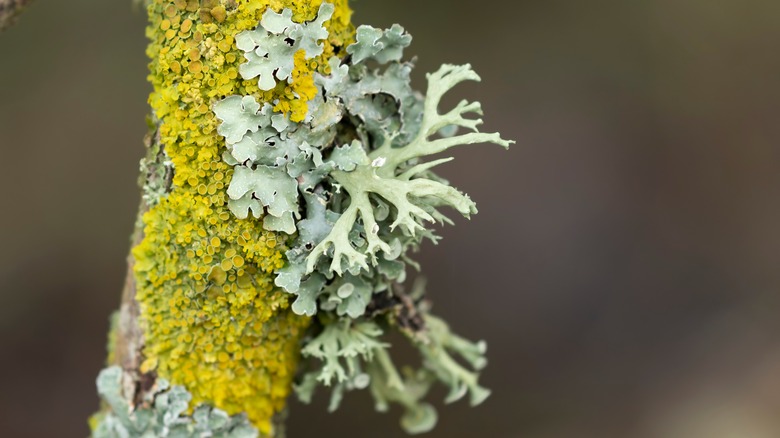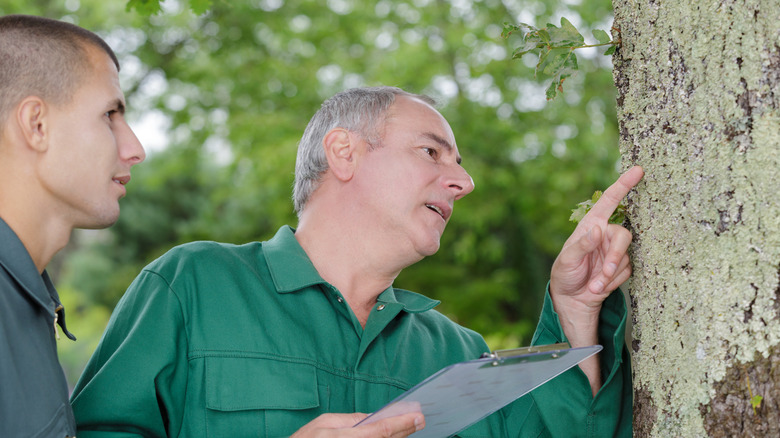Should You Worry About Lichen Growth On Your Trees?
If you have trees in your home garden, then you likely have noticed some funny-looking growths on their bark that typically look like green or brown mold. You may have come across a lichen, which is a unique fusion of plant and fungus. Lichens are living things and they can cause a great deal of panic to any gardener desperate about the health of their trees. However, finding lichen growth on your trees is nothing to lose sleep over. They aren't harming your tree and couldn't if they tried because they don't have parasitic organs that facilitate nutrient uptake from your tree or even the soil. Instead, they derive their nutrition from the air around them.
Lichens grow on trees because they find it a suitable habitat to receive everything they need: food, water, and sunlight. They may grow on your tree bark but aren't always the easiest to spot because they look like flat leaves pressed against the tree's surface. Some blend in very well in dull colors while others are brighter. These organisms "eat" by absorbing nutrients from the atmosphere. Because they are averse to air pollution, they make the best detectors of environmental pollution and air quality. They respond to air toxicity quickly, so the less there are in an area, the worse the air quality likely is. The presence of many lichens on your trees means that the air around you is likely free of excessive pollutants.
When to be worried about lichens
You rarely need to work yourself into a tizzy if your favorite tree is covered in lichens. That being said, having them on your tree may be a sign that you should inspect your bark closely. Because lichens can live alongside other types of disease-causing fungi, it would probably seem to the gardener that the lichen is part of the reason why the diseased tree in the yard is looking more damaged or unhealthy. Lichens provide so many benefits — from feeding wildlife to providing nesting materials for birds — but they also are often present alongside fungal disease. If your tree is old or sick and contains lichens, make sure you run a proper diagnostic test to find out what's wrong with it.
If your tree is mostly deadwood or has damaged bark and you find excess lichens on it, it could also be indicative of a major incoming disease attack. This is partially because lichens like humid areas where they can get their water source from, and humidity is a major factor in fungal growth. Also, lichens sometimes prefer to set up camp on trees that are already heading towards illness or decay. So make sure you take a close look and treat any negative fungus or disease that is present alongside the lichens.
How to get rid of lichens
Although lichens on their own are virtually harmless to your tree, you may dislike their appearance and want them gone anyway. But you should consider the consequences of removing them. It's not always a smooth process and you may end up harming the bark of your tree if you do.
Lichens love to find shelter in the grooves of tree bark. This makes it tricky to remove them without causing permanent injury to your plant. Because they settle so snugly, prying them loose will usually cause that piece of bark to come out with it. This can expose the inner parts of the tree to bacterial, fungal, and viral diseases. Also, pests like wood-boring insects will see this as a perfect opportunity to attack your tree.
The best way to get rid of unwanted lichens with the least damage is by using a mild soap solution. You can mix dish liquid and water into a spray bottle and saturate the lichen. Use a soft-bristled brush to gently work on it until it comes off. Whatever you do, don't hack away at lichens with your gardening tools — you can cause irreversible damage. Caring for and maintaining your tree is important in the quest to rid yourself of lichens. That means pruning your tree regularly, and mulching and aerating the soil. It is extremely difficult to remove all lichen growth, so you should learn to appreciate this plant-fungi hybrid.


